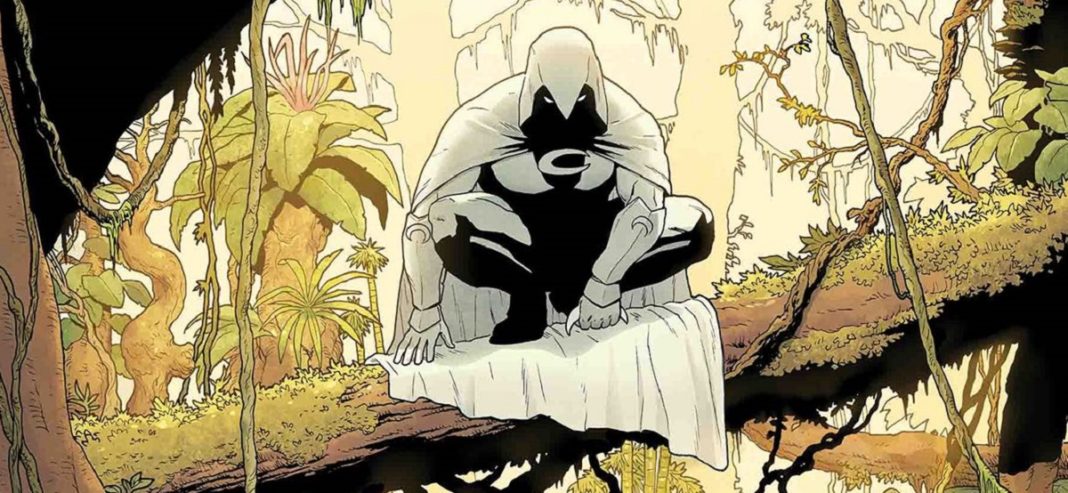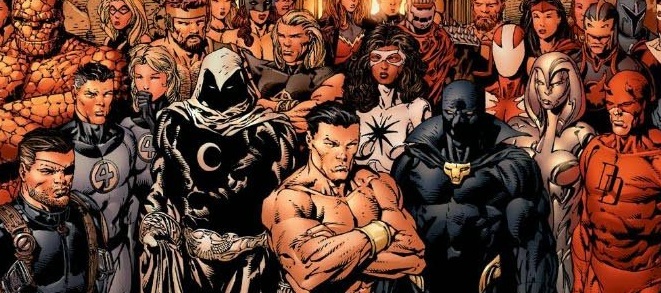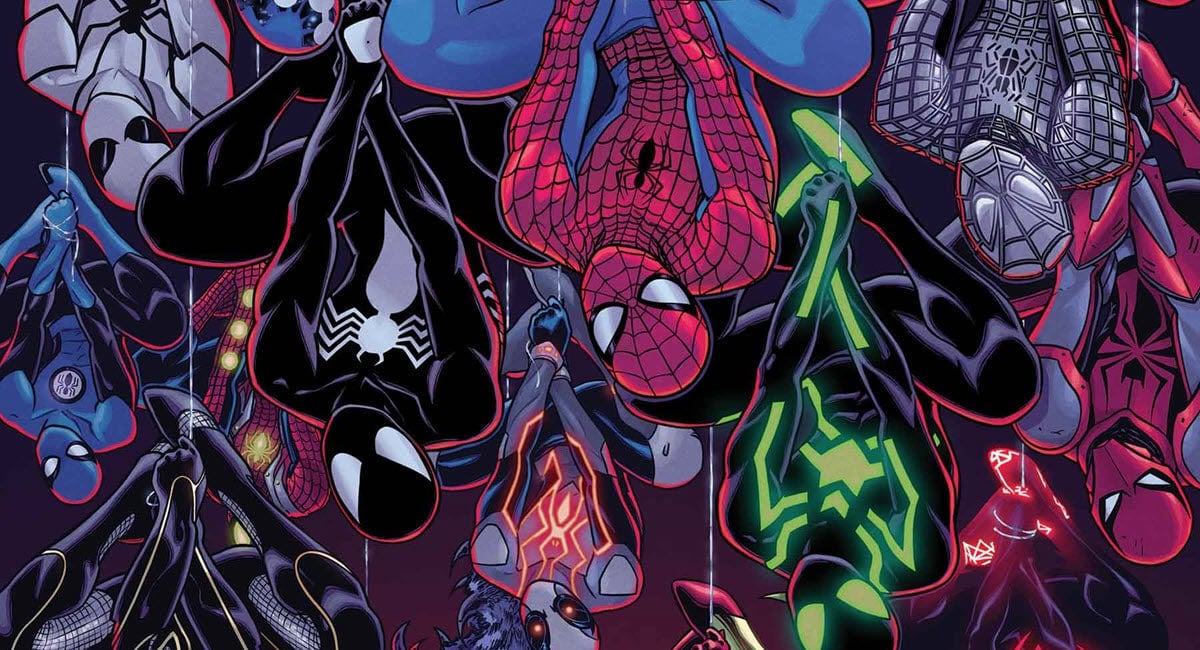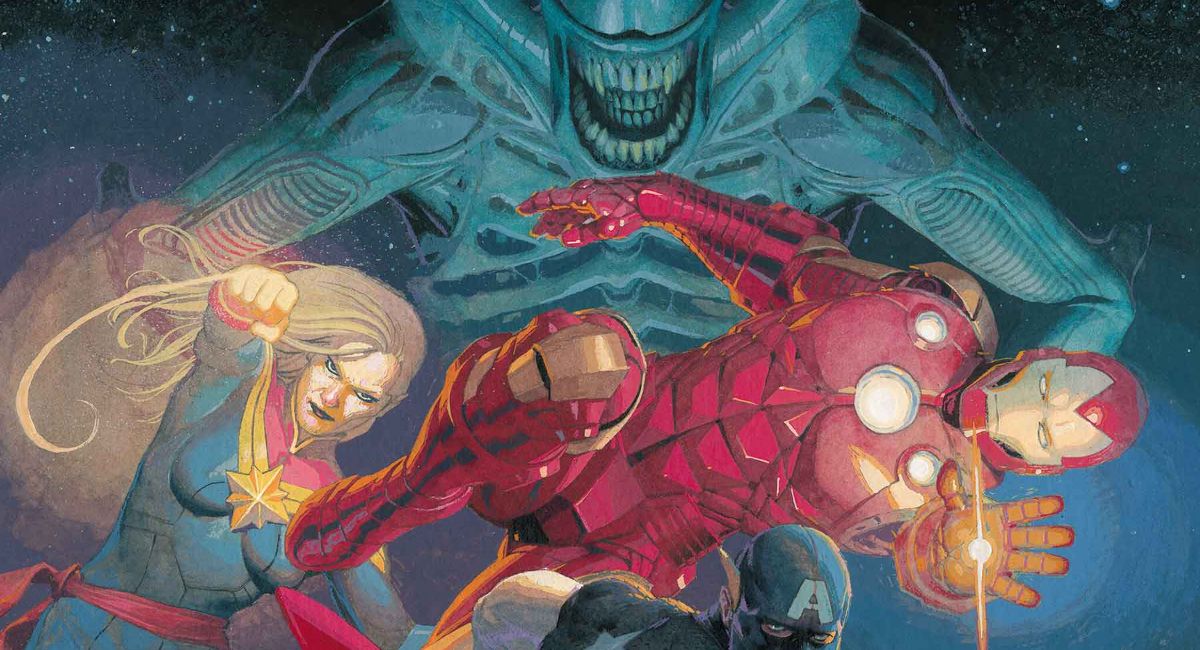It’s a good time to be a fan of Moon Knight, Ms. Marvel and She-Hulk. With three new Marvel TV shows announced as part of Disney Plus’ offerings at D23, Feige announced these lesser-known Marvel characters will be hitting the small screen as part of phase four.
A Moon Knight TV show could be a tough sell for general audiences, but this is a character comic book fans have been clamoring to see appear on screen for years. While news about a showrunner and cast are still a ways off, now is as good a time as any to finally learn the answer to this timeless question: “Who the hell is Moon Knight?”
Who is Moon Knight?
Instead of something stereotypical like being a lost King or the last child of a dying world, Marc Spector has quite a unique origin. Created by Dough Moench and Don Perlin in Werewolf by Night #32, Marc is the son of a Rabbi who fled Europe during the 1930s to avoid Nazi persecution. Against his father’s wishes, Marc rebelled from Judaism and started training to be a heavyweight boxer, eventually giving up his career and joining the CIA. While operating with some mercenaries in Sudan (more on that later), Marc is left for dead after a bloody confrontation with his boss and rescued by a group of Egyptian nomads who bring his failing body inside a temple. Placed at the alter of Khonshu, the Egyptian Moon God, Marc has a vision where the spirit asks him to serve as his avatar and champion on Earth. Brought back to life, Marc wraps himself in the cloak that was draped around the statue and becomes Moon Knight. At various times in his career, he has been depicted as someone with superpowers, typically dependent on the phase of the moon, but more often than not he is just a skilled, erratic fighter who uses everything from darts to bo staffs to defeat his opponents.
Part of what makes Moon Knight such a compelling figure are his struggles with mental health issues. Upon returning to the U.S., Marc Spector created the personas of Steven Grant and Jake Lockely so he can keep tabs on the wealthy and street sectors of his city, but the six-issue series Moon Knight: Fists of Khonshu firmly established the idea that Marc deals with schizophrenia and often can’t control or remember when he shifts personalities. On paper, Moon Knight is similar to Batman in so many ways; he’s a human being who decides to use his gifts and wealth to help others, but his deeper personal struggles often make his battle against crime seem more self-sacrificial and dangerous.
Even though Moon Knight is intrinsically tied with Egyptian mysticism and spirits, Marc Spector’s connection to Judaism shouldn’t be overlooked for the TV series. As a Forbes article recently pointed out, Spector’s relationship with Judaism- specifically the abandonment of his father’s principles to develop his own path forward- could serve as an interesting, emotional plot thread that keeps Marc perpetually in search of new meaning to imbue his life with. Just like Daredevil’s connection with Catholicism enforces and simultaneously complicates his decision to be a superhero, Marc’s relationship with Judaism- or lack of one- leads directly to the violent path that culminated with him putting on a mask for the first time.
This fool used to be a mercenary
Not all superheroes are born with proper morals. Marc Spector in particular, good boy that he is, certainly fell down a dark hole. His rebellious spirit and athletic abilities quickly landed him right at the CIA’s doorstep, but the corruption he saw around him in the agency led him to quit. Disillusioned with the world, he joins a group of mercenaries that operates primarily in Africa under the leadership of a shady figure named Raoul Bushman. While on a mission, the group discovers an archeological dig of an ancient temple and Bushman murders Dr. Peter Alruane, the lead digger, to take the loot for himself.
Dr. Alruane’s death is enough to cause Marc to rebel against his leader, challenging him to a fight. It’s this confrontation with Bushman that ultimately sees Marc left for dead in the desert and brought to Khonshu’s temple. After officially becoming Moon Knight, Marc defeats Bushman and rescues Peter’s daughter Marlene. Over the years, Marlene and Marc develop a close friendship that sees her assist him on missions and the two constantly falling in and out relationships with one another.
After defeating Bushman, Marc and Marlene head back to the United States and he sets up shop as a superhero. Operating at times out of his Long Island mansion, Moon Knight quickly established a reputation for himself as a street-level hero capable of dealing with mystical threats. Soon after making his New York debut, he interacts with heroes like the Fantastic Four and Doctor Strange. While Spector is less likely to use lethal force now that he is a spandex-clad superhero, he is still willing to do whatever it takes to save the day.
Yes, he’s an Avenger
Captain America and Iron Man may sometimes give off a “holier than thou” vibe, but the truth is the Avengers have a few killers on their team. Like Wolverine or The Punisher, Moon Knight may work on the fringes of the superheroic business, but he is still a trusted, dependable member of the Avengers community. Whenever he does work alongside a team, it seems like his mental handicaps are somewhat dumbed-down a bit to make it easier for him to work with others, but it’s clear that he is still the odd-one-out in most social groups.
In addition to the standard Avengers squad, Moon Knight also joins the West Coast Avengers. After Vision makes a comment about how the team should expand their influence, Hawkeye heads west and assembles his own Avengers force to spread the brand and save lives. While he’s not a founding member of the team, Moon Knight is eventually brought into the fold. Despite the fact that Moon Knight and Tigra’s dissatisfaction with the Avenger’s no-killing rule led them to quit the team and assemble their own group, Moon Knight is able to stay in the relative good graces of his fellow Avengers and continue operating on the streets despite his extreme methods.
During Steve Roger’s stint as Marvel’s top-cop following the events of Siege, he sets up a special-ops team of covert superheroes to perform missions too secretive and dangerous for the public to know about. Alongside heroes like Valkyrie and Beast, Moon Knight is one of the few people Steve invites to join the team. The team was assembled for its ability to strike tactically without drawing too much (or any) attention to themselves, and Moon Knight’s stealthy fighting abilities make him the perfect asset for Roger’s crew.
Shifting Landscape
No matter how big of a Moon Knight fan someone may be, it’s still rather tricky to keep track of everything the character has experienced. The rebooting/reshuffling nature of comic books, tied to the fact that Marc actually has mental health issues that make it difficult to follow everything around him, makes it hard to follow his superheroic career on a linear path.
Throughout most of his career, Marc Spector is Moon Knight, fighting evil in New York City as Khonshu’s avatar. But at other points, he has been depicted as a producer in Los Angeles creating a television show about his own bizarre experiences and even a police consultant who goes by “Mr. Knight.” Despite the differences in each depiction, one thing remains constant whenever a new creative team examines Moon Knight: Marc Spector is dedicated to helping people and willing to put himself in harm’s way to do it. No matter what versions of the character the TV series pulls from, there is a lot of interesting material in both the real and metaphysical world to explore through Moon Knight.










Hey, it’s a pretty common misconception, but schizophrenia and dissociative identity disorder aren’t the same thing.
The Moench-Sienkiewicz run of the early ’80s is worth seeking out. Still some of my favorite comics published by Marvel.
I wish I had a strong comment about Moon Knight, but I don’t. Probably need to read the Scienkiwicz-drawn issues properly; I’ve only read them in an Essential edition, which is far from desirable. Scienkiwicz’ art is my main draw, and the story matches it in places when you see Scienkiwicz continuing to push and extend what he was doing. That was the best thing
The Sienkiewicz art works fine in the Essentials — especially his later stories, which were largely in black and white with a bit o color.
Comments are closed.